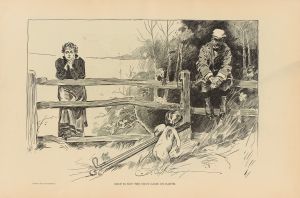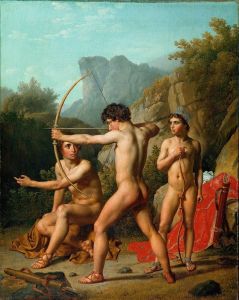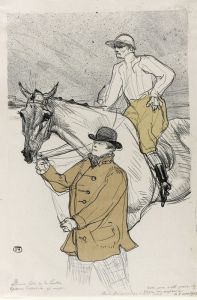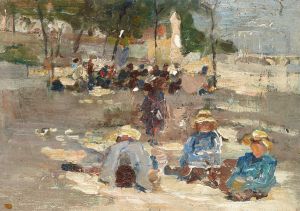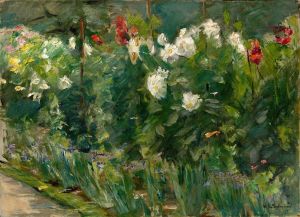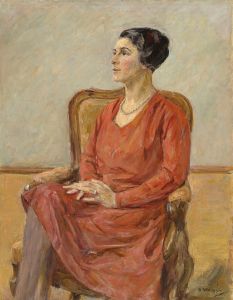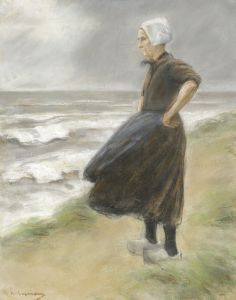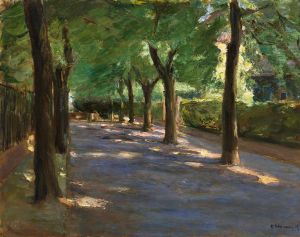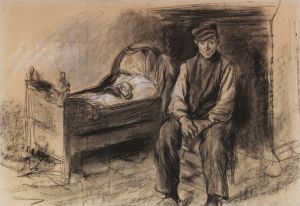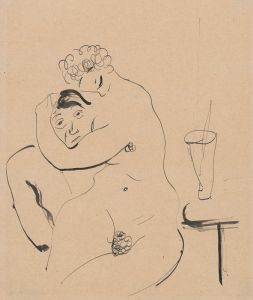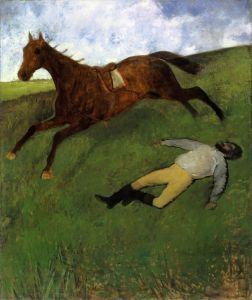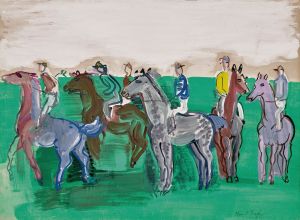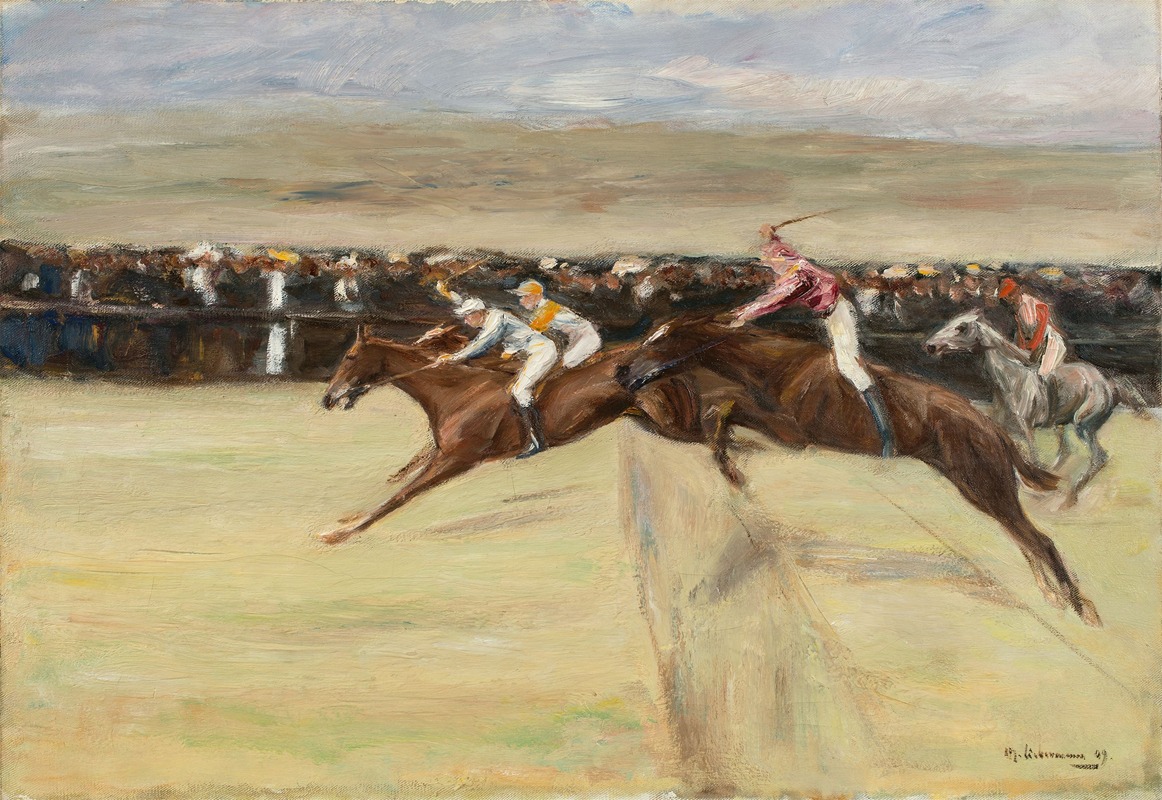
Pferderennen in den Cascinen
A hand-painted replica of Max Liebermann’s masterpiece Pferderennen in den Cascinen, meticulously crafted by professional artists to capture the true essence of the original. Each piece is created with museum-quality canvas and rare mineral pigments, carefully painted by experienced artists with delicate brushstrokes and rich, layered colors to perfectly recreate the texture of the original artwork. Unlike machine-printed reproductions, this hand-painted version brings the painting to life, infused with the artist’s emotions and skill in every stroke. Whether for personal collection or home decoration, it instantly elevates the artistic atmosphere of any space.
Max Liebermann was a prominent German painter and printmaker, associated with the Impressionist movement. Born in 1847 in Berlin, Liebermann became one of the leading figures in the German art scene during the late 19th and early 20th centuries. His work is known for its vibrant depiction of everyday life and landscapes, often capturing the essence of modernity and the changing society of his time.
"Pferderennen in den Cascinen" (Horse Racing in the Cascine) is one of Liebermann's notable works. Painted in 1901, this artwork exemplifies his mature style, characterized by loose brushwork and a keen interest in light and movement. The painting depicts a horse race in the Cascine Park, a large public park in Florence, Italy. This setting provided Liebermann with the opportunity to explore the dynamic interaction between humans and animals, a theme he frequently revisited in his work.
The Cascine Park, known for its picturesque landscapes and recreational activities, served as an ideal backdrop for Liebermann's exploration of leisure and modern life. In "Pferderennen in den Cascinen," Liebermann captures the excitement and energy of the horse race, using a palette of vibrant colors and dynamic compositions. The painting reflects the influence of French Impressionism, particularly the works of artists like Édouard Manet and Edgar Degas, who also depicted scenes of horse racing and modern life.
Liebermann's technique in this painting demonstrates his mastery of capturing movement and atmosphere. The brushstrokes are loose and expressive, conveying the speed and intensity of the race. The figures of the jockeys and horses are rendered with a sense of immediacy, emphasizing the fleeting nature of the moment. The use of light and shadow adds depth to the composition, highlighting the contrast between the sunlit areas and the shaded parts of the scene.
Throughout his career, Liebermann was known for his ability to depict the nuances of human interaction and the subtleties of natural light. "Pferderennen in den Cascinen" is a testament to his skill in portraying the vibrancy of life and the beauty of the natural world. The painting is a celebration of movement and energy, capturing a moment of excitement and anticipation.
Max Liebermann's contribution to art extends beyond his paintings. He was a key figure in the Berlin Secession, an art movement that sought to break away from traditional academic art and promote modernist approaches. His work influenced a generation of artists and helped shape the development of modern art in Germany.
Today, "Pferderennen in den Cascinen" is recognized as an important work in Liebermann's oeuvre, reflecting his engagement with contemporary themes and his innovative approach to painting. The painting is held in high regard for its artistic merit and historical significance, offering insight into the cultural and social dynamics of the early 20th century. Through this work, Liebermann continues to be celebrated as a pivotal figure in the history of art, whose legacy endures in the vibrant depictions of life and movement he so masterfully created.





